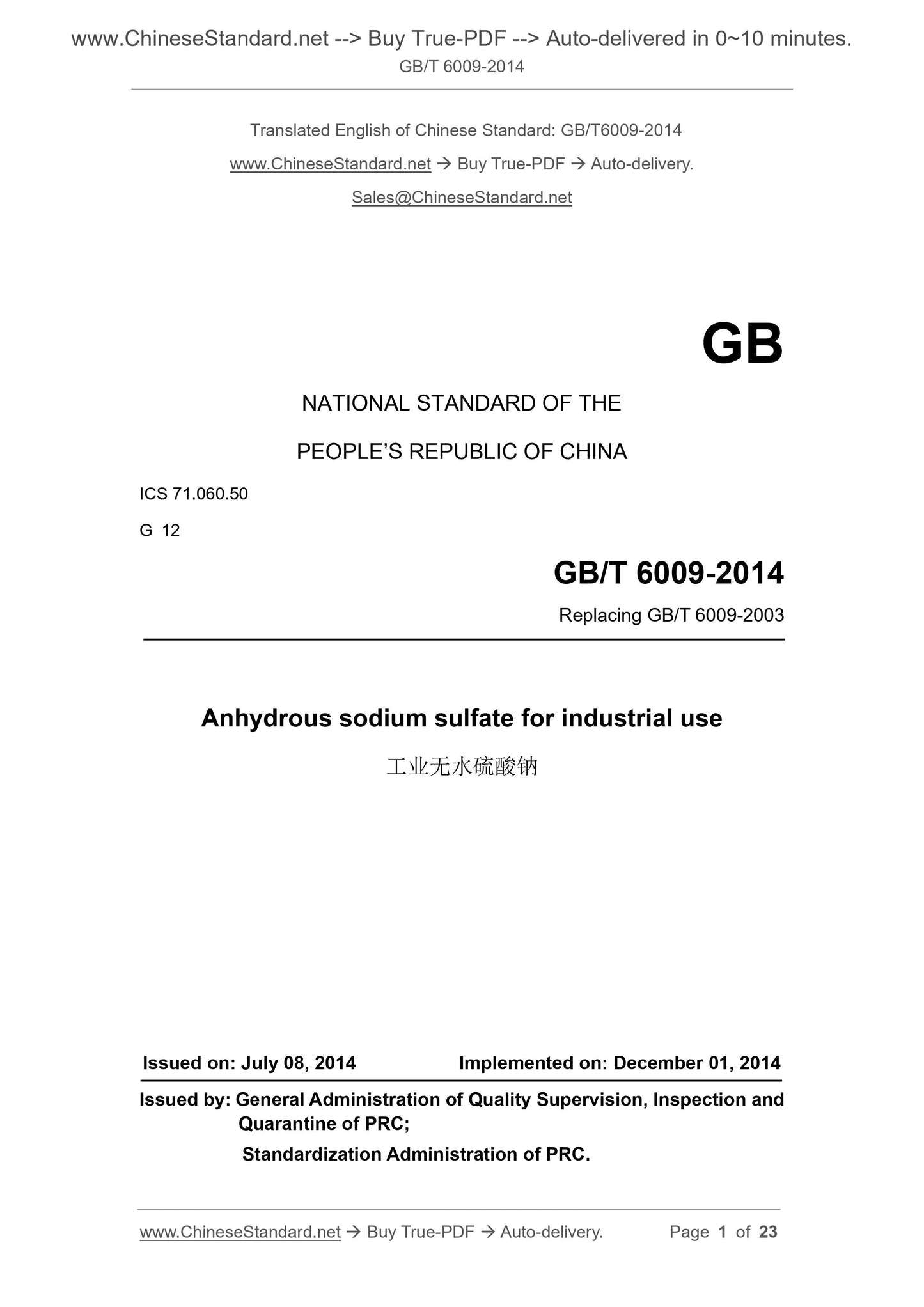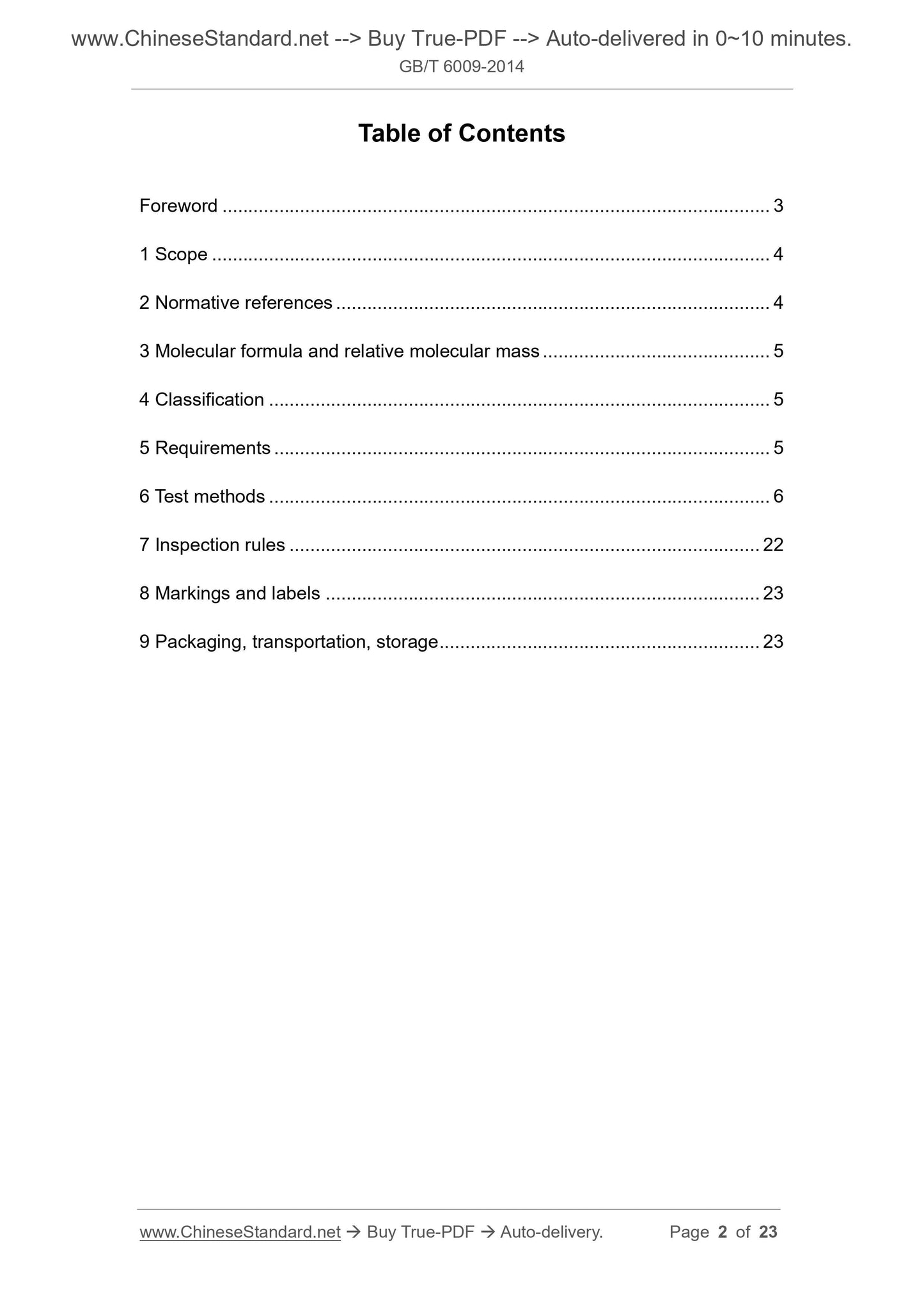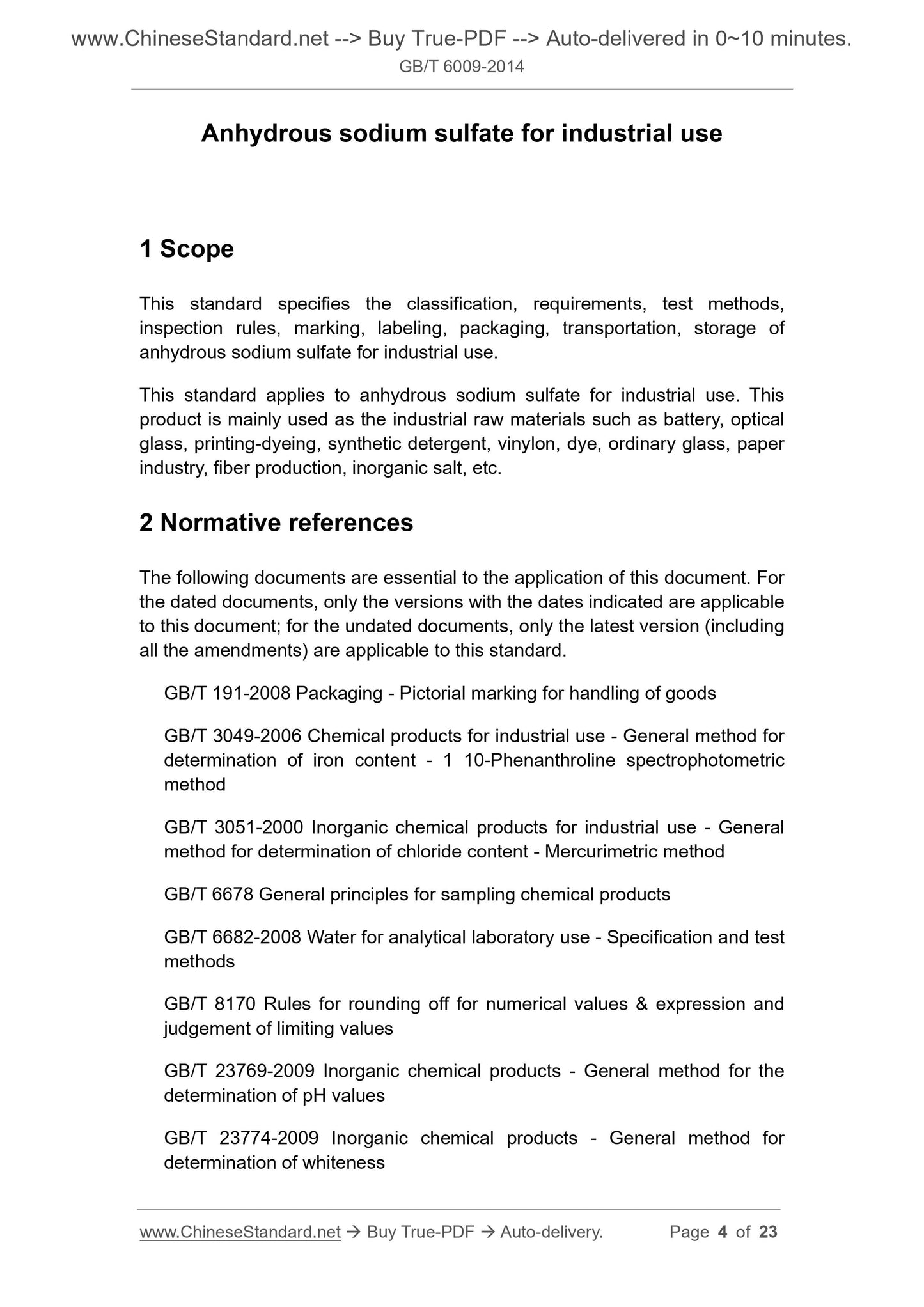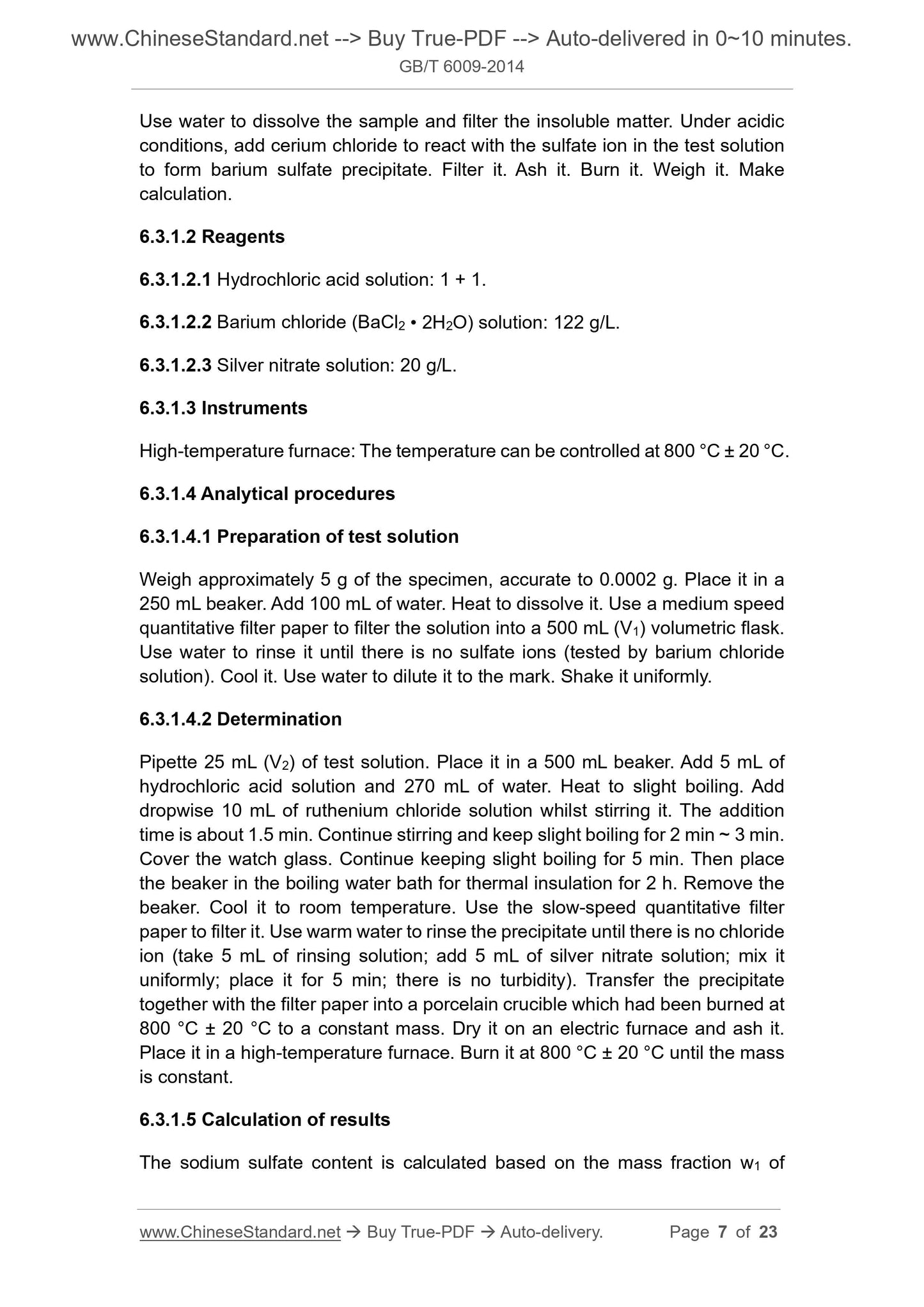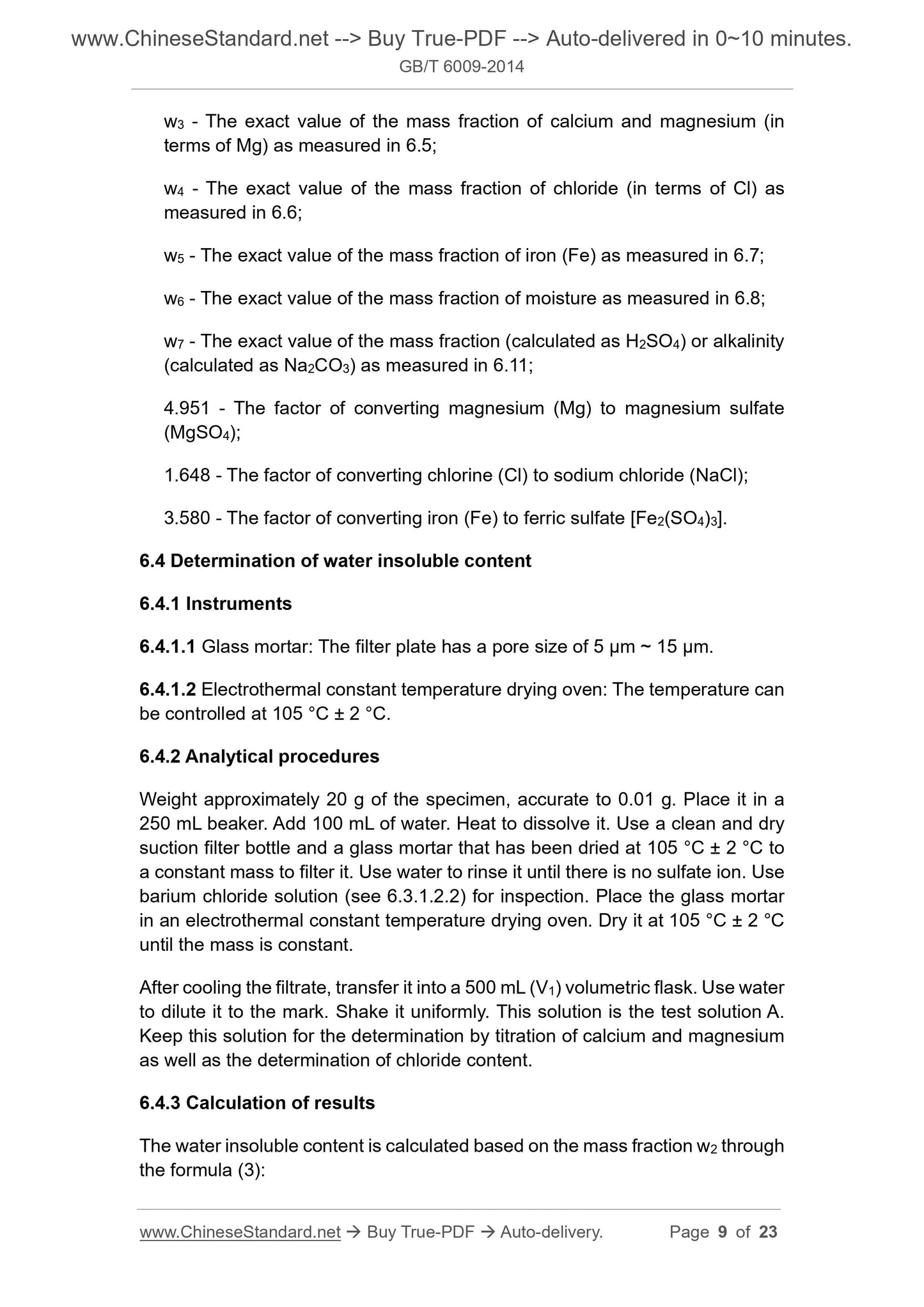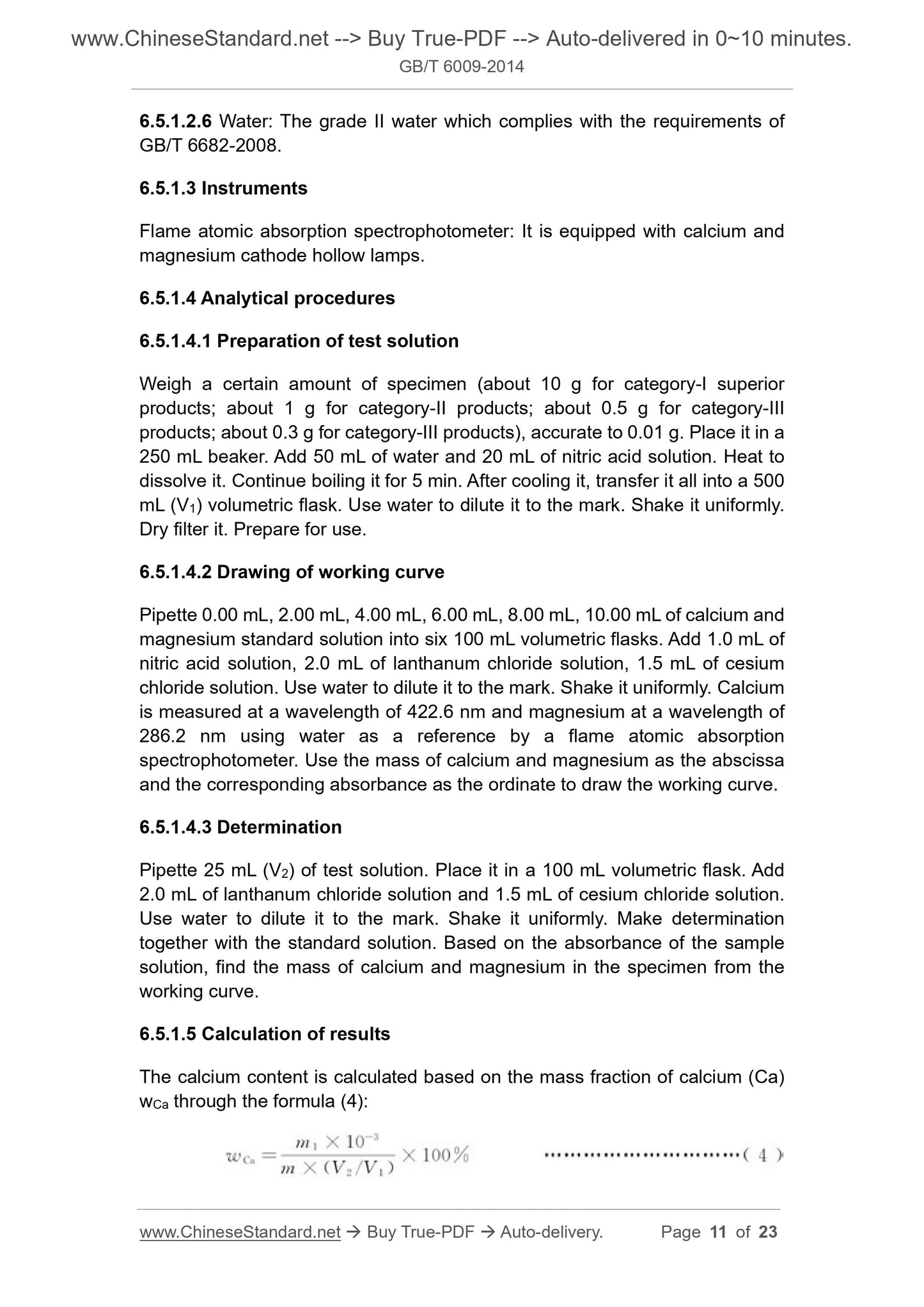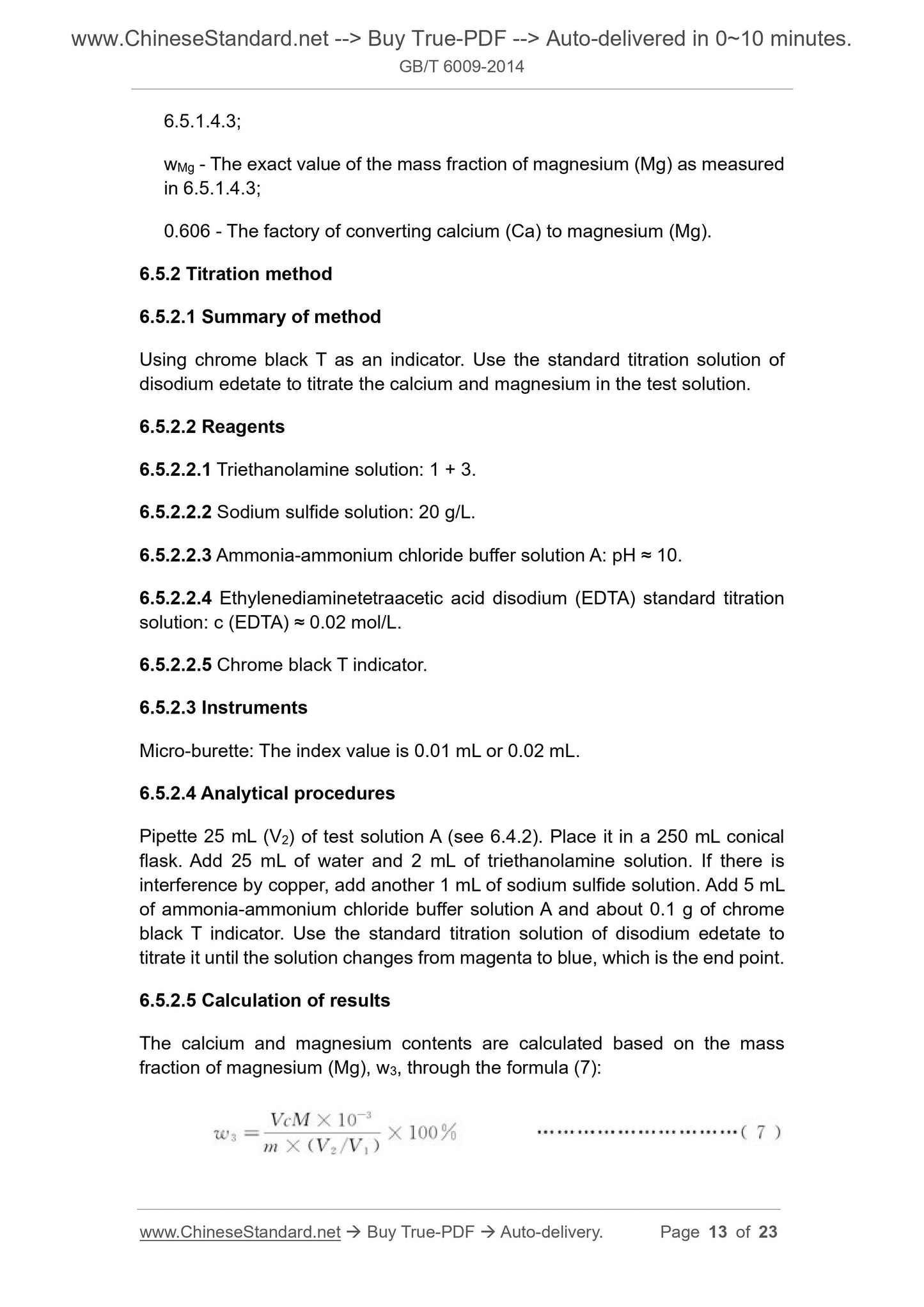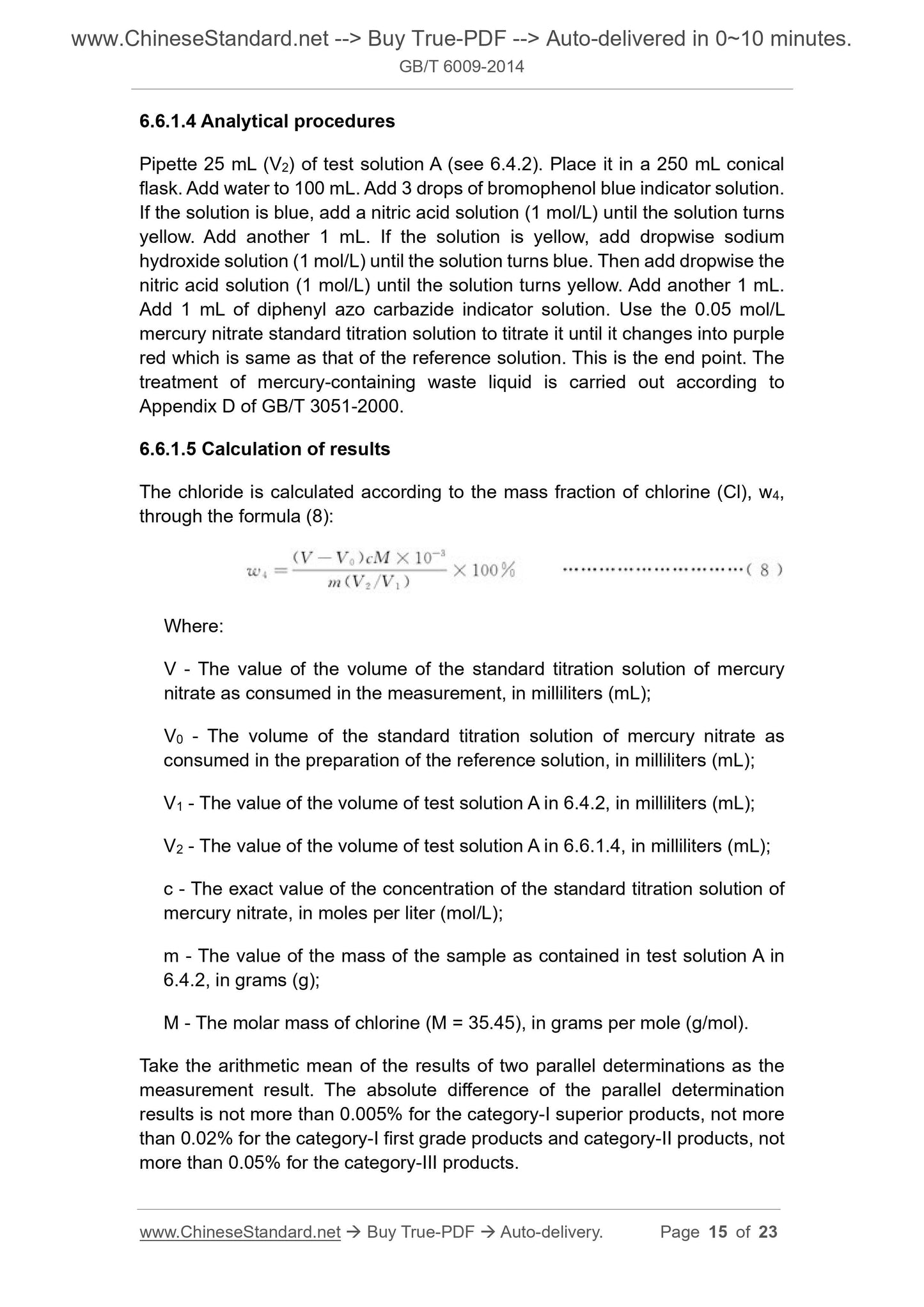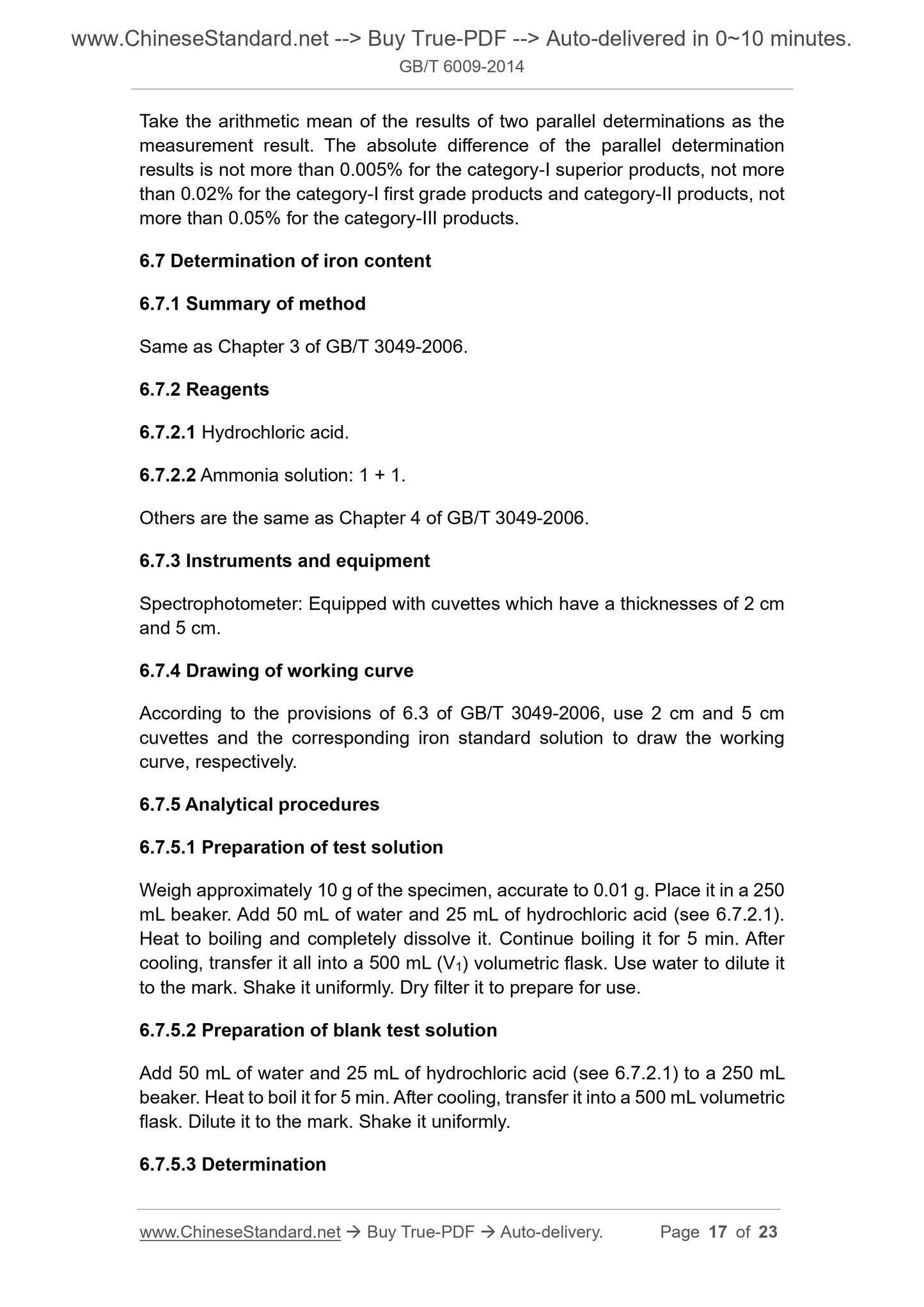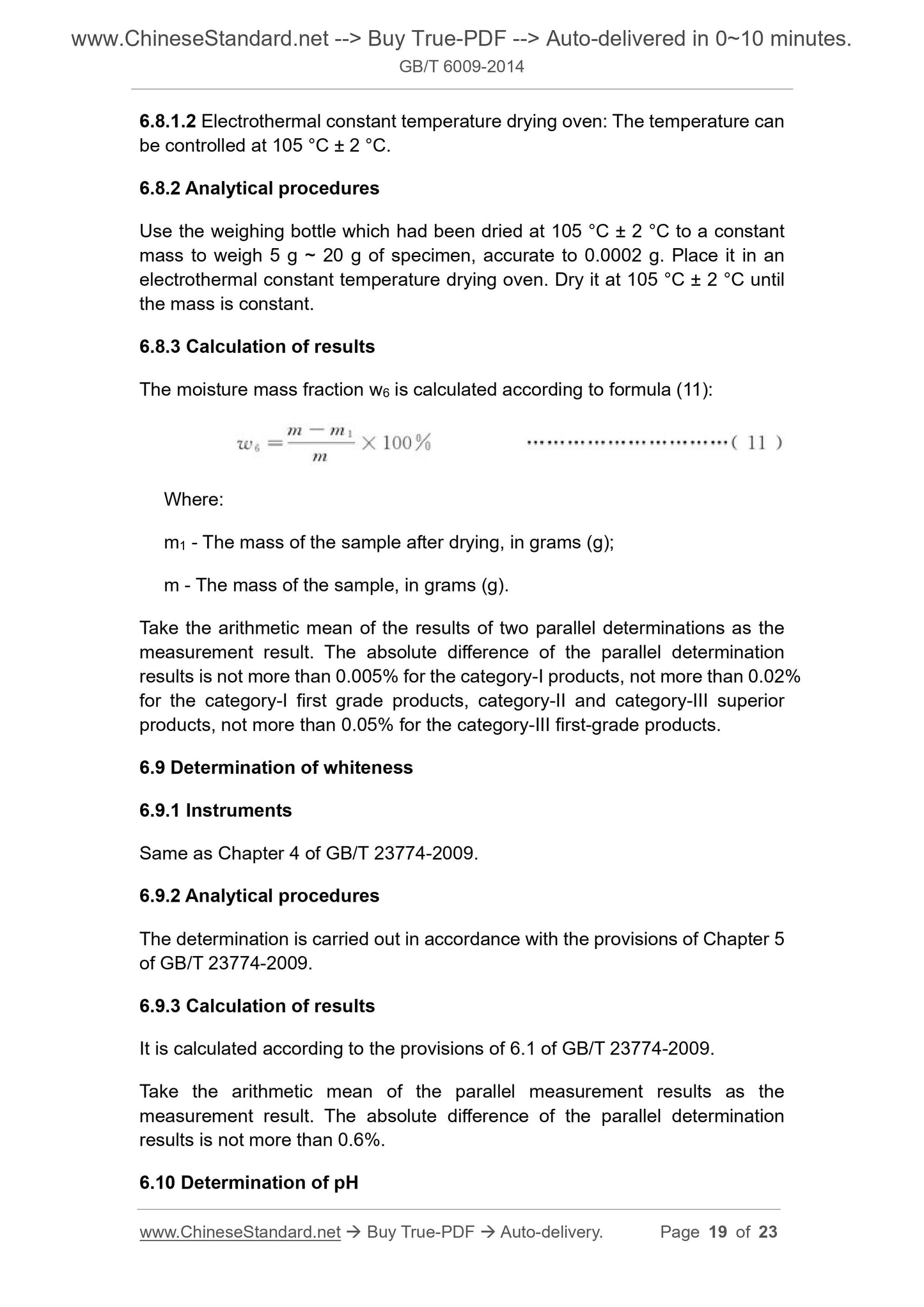1
/
of
10
www.ChineseStandard.us -- Field Test Asia Pte. Ltd.
GB/T 6009-2014 English PDF (GB/T6009-2014)
GB/T 6009-2014 English PDF (GB/T6009-2014)
Regular price
$105.00
Regular price
Sale price
$105.00
Unit price
/
per
Shipping calculated at checkout.
Couldn't load pickup availability
GB/T 6009-2014: Anhydrous sodium sulfate for industrial use
Delivery: 9 seconds. Download (and Email) true-PDF + Invoice.Get Quotation: Click GB/T 6009-2014 (Self-service in 1-minute)
Newer / historical versions: GB/T 6009-2014
Preview True-PDF
Scope
This standard specifies the classification, requirements, test methods,inspection rules, marking, labeling, packaging, transportation, storage of
anhydrous sodium sulfate for industrial use.
This standard applies to anhydrous sodium sulfate for industrial use. This
product is mainly used as the industrial raw materials such as battery, optical
glass, printing-dyeing, synthetic detergent, vinylon, dye, ordinary glass, paper
industry, fiber production, inorganic salt, etc.
Basic Data
| Standard ID | GB/T 6009-2014 (GB/T6009-2014) |
| Description (Translated English) | Anhydrous sodium sulfate for industrial use |
| Sector / Industry | National Standard (Recommended) |
| Classification of Chinese Standard | G12 |
| Classification of International Standard | 71.060.50 |
| Word Count Estimation | 15,198 |
| Date of Issue | 7/8/2014 |
| Date of Implementation | 12/1/2014 |
| Older Standard (superseded by this standard) | GB/T 6009-2003 |
| Quoted Standard | GB/T 191-2008; GB/T 3049-2006; GB/T 3051-2000; GB/T 6678; GB/T 6682-2008; GB/T 8170; GB/T 23769-2009; GB/T 23774-2009; HG/T 3696.1; HG/T 3696.2; HG/T 3696.3 |
| Regulation (derived from) | 2014 National Standards Bulletin No. 18 |
| Issuing agency(ies) | General Administration of Quality Supervision, Inspection and Quarantine of the People's Republic of China, Standardization Administration of the People's Republic of China |
| Summary | This standard specifies the industrial anhydrous sodium classification, requirements, test methods, inspection rules, marking, labeling, packaging, transportation and storage. This standard applies to industrial anhydrous sodium sulfate. The products are |
Share
